Is a 529 Plan, Coverdell, or Roth IRA better for your kids?

When it comes to saving for your child’s future, especially their education, there are several investment vehicles available, each with its own set of benefits and limitations. Among the most popular options are 529 Plans, Coverdell Education Savings Accounts (ESAs), and Minor Roth IRAs. Deciding which is best for your family involves understanding how these accounts work, their tax advantages, and their flexibility in terms of use and investment options. Let’s delve into each of these options to help you make an informed decision.
529 Plans
529 Plans are tax-advantaged savings plans specifically designed to encourage saving for future education costs. They are sponsored by states, state agencies, or educational institutions. There are two types of 529 plans: prepaid tuition plans and education savings plans.
Pros:
- Tax Benefits: Contributions grow tax-deferred, and withdrawals are tax-free when used for qualified education expenses, including tuition, room and board, and even K-12 tuition up to a certain limit.
- High Contribution Limits: Most states allow contributions of over $300,000 per beneficiary, making 529 plans suitable for those who wish to save a significant amount.
- Control by Donor: The account owner, not the beneficiary, retains control over the account, including decisions on withdrawals and investment choices.
- Changing Beneficiaries: 529 plans also can be transferred to a sibling or other family member tax-free through a plan to plan rollover.
Cons:
- Limited Investment Options: Investment options are determined by the plan and may be more limited than those available through other investment accounts.
- Penalty for Non-Qualified Withdrawals: Non-qualified withdrawals are subject to income tax and a 10% federal penalty on earnings.
Coverdell Education Savings Accounts (ESAs)
Coverdell ESAs are tax-advantaged investment accounts designed to pay for a beneficiary’s education expenses, from elementary through college.
Pros:
- Wide Range of Qualified Expenses: Funds can be used for qualified K-12 expenses and higher education costs, offering more flexibility than 529 Plans in terms of expense coverage.
- Variety of Investment Options: Unlike 529 Plans, Coverdell ESAs offer a wide range of investment choices, similar to those available in IRAs.
- Changing Beneficiaries: ESAs can also be transferred to a sibling or other family member tax-free through a plan to plan rollover.
Cons:
- Low Contribution Limit: The annual contribution limit is $2,000 per beneficiary, which may not be sufficient to cover all education expenses.
- Income Restrictions: There are income limits for contributors, which may exclude higher-earning families from participating.
Custodial Roth IRAs
Though primarily designed for retirement savings, Roth IRAs for Minors can also be used to save for your child’s education, offering unique benefits not found in traditional education savings accounts.
Pros:
- Tax-Free Withdrawals: Contributions (but not earnings) can be withdrawn tax-free at any time, and earnings can be withdrawn tax-free for qualified education expenses after the account has been open for five years.
- Flexibility: If your child doesn’t need the funds for college, the Roth IRA serves as a retirement savings account, providing financial flexibility.
- No Age or Income Limit for Contributions: As long as you have earned income, you can contribute to a Roth IRA, regardless of your age.
Cons:
- Contribution Limits: The annual contribution limit is relatively low, $6,000 in 2023 (or $7,000 for those 50 and older), which may not fully cover education costs.
- Income Limits: Eligibility to contribute to a Roth IRA phases out at higher income levels.
- Taxable Income: Your teen must have earned income each year they contribute to a Roth IRA, so older teens benefit more from this type of account.
- Beneficiary Changes: Unlike a 529 plan and ESA, you can’t change the child designated on a Roth IRA account since you are opening this account in your child’s name. You are just acting as custodian until they turn 18 or 21 (varies by state) and then they have full access to the account.
Which is Best for Your Kids?
The best choice depends on your financial situation, your savings goals, and how you plan to use the funds.
- For Higher Education Savings: A 529 Plan is often the best choice due to its high contribution limits and tax-free withdrawals for qualified education expenses.
- For K-12 and Flexible Education Savings: A Coverdell ESA offers the benefit of covering a wide range of education expenses with the flexibility of investment choices.
- For Long-Term Flexibility: A Roth IRA might be the best option if you’re also looking for a vehicle that can double as a retirement savings account for your child if it’s not used for education.
Each of these accounts has unique advantages that can help you save for your child’s education while offering tax benefits. Consider your financial goals, the potential costs of your child’s education, and your income level when deciding which account or combination of accounts is best for your family. If you have questions about your family’s specific situation, feel free to contact us.
Casey Smith
President, Wiser Wealth Management
Share This Story, Choose Your Platform!
Wiser Wealth Management, Inc (“Wiser Wealth”) is a registered investment adviser with the U.S. Securities and Exchange Commission (SEC). As a registered investment adviser, Wiser Wealth and its employees are subject to various rules, filings, and requirements. You can visit the SEC’s website here to obtain further information on our firm or investment adviser’s registration.
Wiser Wealth’s website provides general information regarding our business along with access to additional investment related information, various financial calculators, and external / third party links. Material presented on this website is believed to be from reliable sources and is meant for informational purposes only. Wiser Wealth does not endorse or accept responsibility for the content of any third-party website and is not affiliated with any third-party website or social media page. Wiser Wealth does not expressly or implicitly adopt or endorse any of the expressions, opinions or content posted by third party websites or on social media pages. While Wiser Wealth uses reasonable efforts to obtain information from sources it believes to be reliable, we make no representation that the information or opinions contained in our publications are accurate, reliable, or complete.
To the extent that you utilize any financial calculators or links in our website, you acknowledge and understand that the information provided to you should not be construed as personal investment advice from Wiser Wealth or any of its investment professionals. Advice provided by Wiser Wealth is given only within the context of our contractual agreement with the client. Wiser Wealth does not offer legal, accounting or tax advice. Consult your own attorney, accountant, and other professionals for these services.





